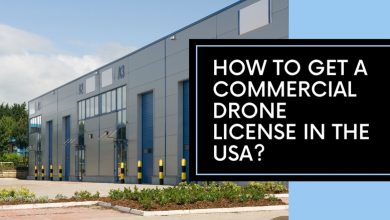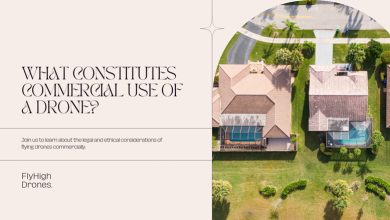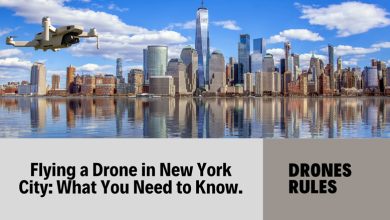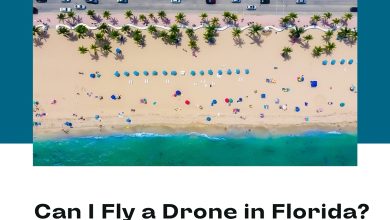Do Police Use Drones?
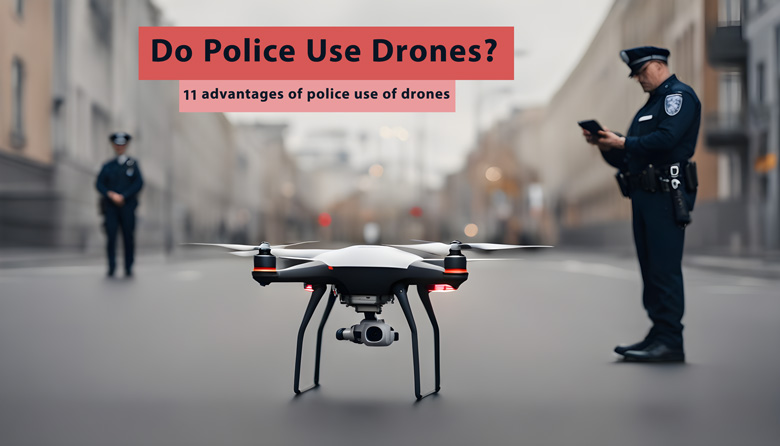
But have you ever wondered if these flying machines are also playing a crucial role in law enforcement? The question arises: “Do police use drones?”
Let’s address this question in this essay together!
Can police use drones for surveillance?
Drones have emerged as a valuable tool for aerial surveillance. So, yes, police can use drones for surveillance.
These UAVs offer a useful perspective, providing law enforcement with an effective means of monitoring various situations.
Whether it is overseeing public gatherings, tracking suspects in criminal investigations, or ensuring the safety of officers and the public during high-stakes operations, drones have proven to be a versatile asset.
Their ability to capture real-time images and data from vantage points that were previously inaccessible allows police to gather critical information and enhance their surveillance capabilities.
What are the benefits of drones in law enforcement?
Police departments have harnessed the power of drones in a multitude of ways, transforming the path of law enforcement operations.
Some common ways of using drones by police departments are listed below:
Traffic crash reconstruction
Drones have become an invaluable tool for law enforcement in accurately documenting traffic crash scenes.
They expedite the process, creating three-dimensional models in a fraction of the time it takes with traditional methods.
This not only enhances efficiency but also reduces the risk of secondary accidents, ensuring the safety of all involved.
Tactical deployments
Drones are employed for pre-mission reconnaissance, offering early insights into potentially dangerous situations.
They provide vital information about the layout of buildings and the presence of individuals in the area.
Drones in police departments continue to support missions even after the team has entered, offering a bird’s-eye view as the operation unfolds.
SWAT operations
SWAT missions can be highly dangerous, often involving armed individuals who have committed violent acts.
Drones provide real-time overwatch as the SWAT team advances, offering a streaming view to team members.
Drone technology in police improves situational awareness by allowing officers to see around obstacles and into confined areas, day or night.
Hostage situations
In hostage situations, drones offer multiple benefits.
They can be positioned to peer into windows, gathering crucial information about the location of suspects and hostages.
This information guides law enforcement on when and where to make entry, often leading to the resolution of incidents without harm.
Patrol-deployed operations
A quick-deployment drone model equips patrol vehicles, allowing secondary officers to deploy drones at incident scenes swiftly.
This provides real-time situational awareness regarding the presence of individuals and potential hazards, offering additional safety support during K9 operations.
Forensic investigations
Drones play a significant role in forensic investigations, capturing top-down views and data from incident scenes that may be overlooked from ground level.
They assist in creating 3D models for comprehensive scene overviews, facilitating later reviews.
Search for lost persons
Law enforcement agencies employ drones to search challenging terrains where it may be unsafe or impractical for officers to access on foot.
Drones can search large open areas efficiently and identify heat signatures of individuals during both day and night operations, aiding in locating lost persons.
Traffic pattern review
Drones assist law enforcement in evaluating new traffic patterns, ensuring their effectiveness before implementing permanent changes.
During events like COVID-19 vaccination operations, drones review vehicle movements and identify necessary adjustments for efficient traffic flow.
Tethered drones
Tethered drones provide continuous overwatch by remaining stationary and relying on a rope for power.
This eliminates the need for battery changes and allows real-time streaming of visual optic and thermal images. They are particularly useful in maintaining scene perimeters.
Interior drone operations
Drones have recently been deployed for indoor operations, replacing the need for officers to enter buildings and clear each room.
This safer approach can also facilitate two-way communication with suspects and enhance negotiation capabilities.
Drones as first responders
The Drone as a First Responder (DFR) program, initiated in collaboration with the FAA, deploys drones at the time of a 9-1-1 call.
These drones provide real-time situational awareness by streaming live video to officers before they arrive at the scene, enhancing de-escalation and decision-making capabilities.
Quoted from police1.com:
A recent advance in DFR waivers came with the waiver achieved by the Campbell (California) Police Department, which was approved in a record time of two weeks. Trending shows the key elements for the DFR waiver are the defined operational area, flying less than 400 feet above ground level, adhering to facility grid map ceilings, maintaining a two-mile visibility around the drone, and a CONOPS that covers these and other safety-related requirements. Anything beyond these conditions requires a Special Government Interest waiver from the FAA’s System Operations Support Center.
How many police departments use drones?
The integration of drones into law enforcement has witnessed widespread adoption. The use of drones by police departments has surged over the years, with agencies across the country recognizing their invaluable contributions to public safety.
As of March 2020, at least 1,578 state and local public safety agencies in the United States disclosed their acquisition of drones.
Among these agencies, 70% were law enforcement bodies. An impressive 431 of these agencies, constituting 27% of the total reported, had acquired more than one Drone, indicating a growing reliance on this technology.
In particular, the New York City Police Department (NYPD) conducted 75 drone operations throughout the five boroughs in 2021, highlighting the extent to which drones are being used in major metropolitan areas.
Moreover, Florida’s Polk County Sheriff’s Office indicated the rapid integration of drones into law enforcement operations.
Within their first 18 months of operating a drone program, they flew over 750 missions, resulting in the arrests of 31 suspects and the location of five missing or endangered persons. The successful outcomes of such deployments underscore the role of drones in modern policing.
read more:
How to Make Money with Drones 2023?
Can You Fly a Drone Over Private Property?
How Are Drones Used in Agriculture?
Can you Shoot Down a Drone over your Property?
Can Police Use Drones Without a Warrant?
Let’s conclude
In conclusion, the question, “Do police use drones?” has been answered with a resounding yes, and their role in law enforcement continues to expand.
Drones have revolutionized policing, offering enhanced safety and operational efficiency in a wide range of ways.
These aerial devices provide crucial support, from traffic crash reconstruction to hostage situations.
What are your thoughts on the role of drones in law enforcement? Please share your insights and opinions below.

